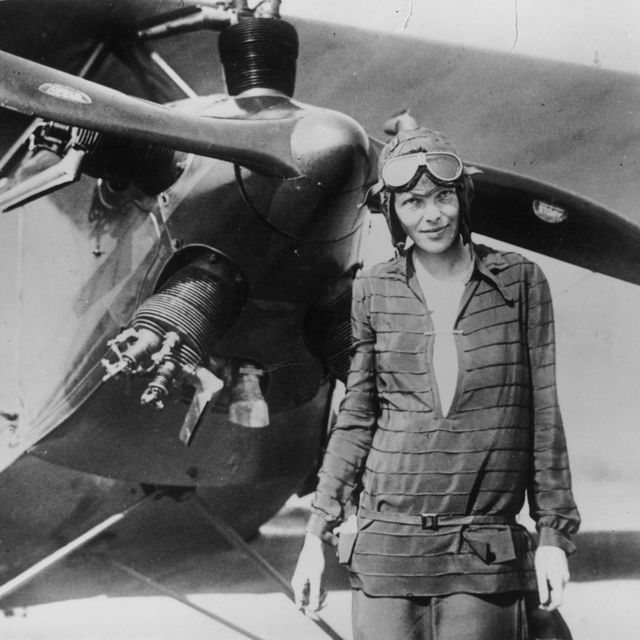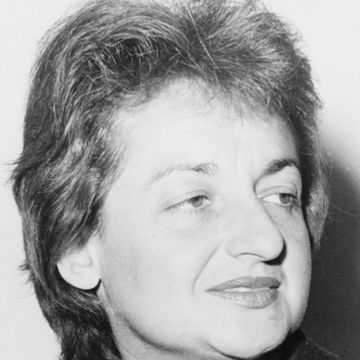In the many years since Amelia Earhart and her navigator, Fred Noonan, vanished while flying over the Pacific on July 2, 1937, people have desperately tried to figure out what really happened to the famous aviator. We look at Earhart's last flight, the factors that may have contributed to what went wrong and the current prevailing theories about her disappearance.
Earhart was pursuing a new record
On May 21, 1937, Earhart took off from Oakland, California, and headed east. It was the start of her second attempt to fly around the world at the equator; an earlier try in March had ended just a few days into the trip when her Lockheed Electra L-10E crashed during takeoff in Honolulu.
Despite that incident, Earhart remained determined to be the first pilot, man or woman, to circle the globe at the equator. Success would not only bolster her reputation, but it would also rescue her family's finances: Flight preparations, including the acquisition and subsequent repairs of a new plane, meant she had "mortgaged the future."
The accident in Hawaii and resulting delay did alter some of Earhart's original plans. Instead of flying west, from California to Hawaii then over the Pacific, she would now travel in the opposite direction. This would help her avoid bad weather, but it would also put the most difficult leg — flying to Howland Island, a tiny, two-mile-long dot in the Pacific Ocean — at the end of a fatiguing journey.
Before the flight, Earhart got rid of her CW transmitter
Noonan would join Earhart on her trip, as originally planned. Though he had a reputation as a heavy drinker, he was a top-notch aerial navigator with the skills to help her find Howland. However, another navigator, Harry Manning, left her crew.
Unlike Manning, neither Earhart nor Noonan were adept at wireless code. This prompted Earhart to get rid of the CW (telegraph code key) transmitter on her plane, as she felt it would be "dead weight" with just her and Noonan onboard. Before departing, she also dropped a trailing antenna that would have allowed her to use the 500-kilocycle marine frequency. Iinstead of Morse code, Earhart planned to communicate by voice at higher bandwidths.
Long days of flying brought Earhart and Noonan to Brazil, Dakar, Khartoum, Bangkok and Darwin, Australia, among other locations. On June 29, the plane arrived in Lae, New Guinea. Though anxious to complete her journey, the next day Earhart sent her husband a telegram that said in part, "RADIO MISUNDERSTANDING AND PERSONNEL UNFITNESS PROBABLY WILL HOLD ONE DAY." She'd mentioned personnel problems on a phone call to her husband as well: it could be that Noonan had been drinking. Whatever the personnel and radio issues, Earhart didn't let them derail her plans — she and Noonan took off from Lae on July 2 at 10 a.m. local time.
Earhart encounter 'cloudy weather' and never landed in Howland
While Earhart's plane was in the air, the Coast Guard cutter Itasca was waiting to guide her to Howland. However, inadequate coordination — Gene Vidal, a friend of Earhart's, was no longer at the Bureau of Air Commerce to direct subordinates to smooth her way — meant some of the ship's communications were on bandwidths that she didn't have the ability to receive. There were other difficulties: A radio direction finder on Howland that would work with Earhart's higher-bandwidth equipment required batteries, which were drained by the time she was in the area (the ship's direction finder only operated at lower bandwidths).
Fourteen hours and 15 minutes into her flight, the Itasca received a first, somewhat garbled transmission from Earhart about "cloudy weather." Though the messages themselves would grow clearer, their content remained worrying, as when Earhart radioed, "We are circling but cannot see island cannot hear you." She apparently only received one message from the ship, though the Itasca had been transmitting for hours. While continuing to broadcast — the radio strength of her communications indicated she was close — Earhart remained unable to see Howland Island.
The weather around Howland was clear, but there were clouds about 30 miles northwest. And if Earhart had flown into clouds and bad weather along the way, it could have prevented Noonan from taking the sightings he needed to navigate precisely (plus the charts he was using were a few miles off). Earhart's last transmission, made 20 hours and 14 minutes into her flight, indicated they were going to continue "running north and south." The plane never made it to Howland.
There are many theories about Earhart's disappearance
The official explanation for Earhart and Noonan vanishing is that their plane ran out of fuel — one of Earhart's messages said they were "running low" — and crashed into the sea. The Itasca unsuccessfully searched the area northwest of Howland, but waves could have broken up Earhart's plane so that it quickly sank (there were also sharks to worry about). However, as the Coast Guard was unable to determine Earhart's exact location, the plane could have gone down elsewhere — a wide area was searched, but getting ships into position took time, during which the Electra could easily have disappeared.
Another theory holds that Earhart and Noonan made it to Gardner Island, now known as Nikumaroro, which is approximately 350 nautical miles south of Howland. They might've survived on the coral atoll for a few days or weeks, until a lack of water, food or injury became insurmountable. Investigators on the island have found parts they think could be from Earhart's plane; in 1940, a skull and other bones were discovered, though they were subsequently lost. Originally judged to have been the remains of a stocky middle-aged man, some experts believe the bones might have been Earhart's. More recently, the International Group for Historic Aircraft Recovery sent forensic dogs to the island to try to locate other bones.













